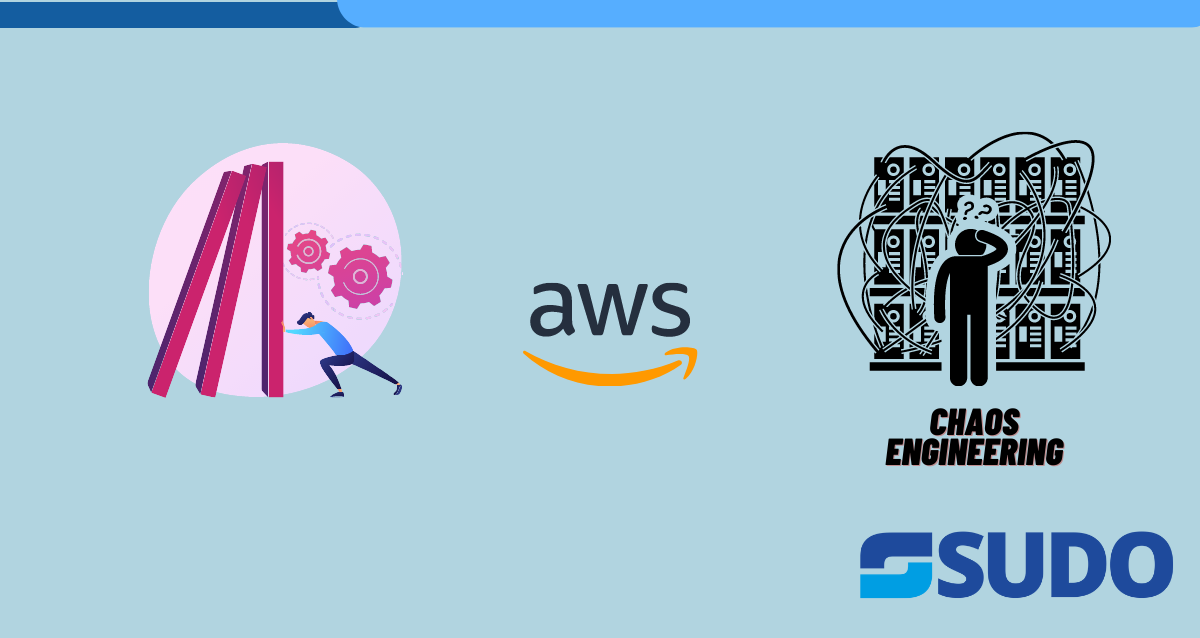
Amazon Web Services (AWS) , a popular and comprehensive cloud computing platform which provides a range of software and hardware based services for building, deploying, and managing applications in the cloud. One aspect of operating in the cloud that is particularly important for ensuring the reliability and resilience of applications is chaos engineering.
Chaos engineering is intentionally introducing failures or disruptions into a system to test its resilience and identify weaknesses that can be addressed to improve its overall reliability. This is important in the context of cloud computing, where applications and services may be distributed across multiple servers and availability zones, and may be subject to various types of failures and disruptions.
AWS provides a number of tools and services that can be used to implement chaos engineering practices in the cloud. These include:
AWS Lambda
AWS Lambda is a serverless compute service which lets you run code without managing servers. You can use Lambda to create custom functions that can be triggered by various AWS services or external events, such as an HTTP request or a change in a database. This can be useful for implementing chaos engineering experiments, as you can use Lambda to inject failures or disruptions into your system in a controlled and automated manner.
Amazon EC2
Amazon Elastic Compute Cloud (Amazon EC2) is a web service that provides scalable, on-demand compute capacity in the cloud. You can use EC2 to launch virtual servers, or “instances,” that can be used to host applications or run other tasks. You can also use EC2 to create custom AMIs (Amazon Machine Images) that include your desired software and configuration, and then launch instances from these AMIs. This can be useful for chaos engineering experiments, as you can use EC2 to launch and terminate instances, or modify their configuration, as part of your experiments.
Amazon ECS
Amazon Elastic Container Service (Amazon ECS) is a container orchestration service which makes it easy to run and manage Docker containers in the cloud. You can use ECS to deploy and scale containerized applications, and to manage the underlying infrastructure and networking. You can also use ECS to perform rolling updates and blue/green deployments, which can be useful for chaos engineering experiments.
Amazon EKS
Amazon Elastic Kubernetes Service (Amazon EKS) is a managed service whichmakes it easy to run Kubernetes on AWS. You can use EKS to deploy and manage containerized applications using Kubernetes, and to take advantage of the scalability, self-healing, and other benefits of Kubernetes. EKS can also be useful for chaos engineering experiments, as you can use Kubernetes features such as pods, deployment, and rolling updates to inject failures or disruptions into your system in a controlled and automated manner.
In addition to these AWS services, there are also a number of third-party tools and platforms that can be used for chaos engineering in the cloud. These include:
Gremlin
Gremlin is a chaos engineering platform which provides a wide range of tools and services for testing the resilience of cloud-based systems. You can use Gremlin to perform chaos engineering experiments on AWS and other cloud platforms, and to automate the process of injecting failures and disruptions into your system.
Chaos Monkey
Chaos Monkey is an open-source tool developed by Netflix that can be used to randomly terminate EC2 instances in order to test the resilience of a cloud-based system. You can use Chaos Monkey to perform chaos engineering experiments on AWS and other cloud platforms, and to automate the process of injecting failures into your system.
Simian Army
The Simian Army is a suite of open-source tools developed by Netflix. To test the resilience of cloud-based systems. The Simian Army includes a number of different tools, such as Chaos Monkey (mentioned above), which can be used to randomly terminate EC2 instances, and Latency Monkey, which can be used to introduce artificial latency into network traffic. Other tools in the Simian Army include Conformity Monkey, which checks for compliance with best practices, and Security Monkey, which monitors security groups and IAM policies. You can use the Simian Army tools to perform chaos engineering experiments on AWS and other cloud platforms, and to automate the process of injecting failures and disruptions into your system.
It’s important to note that chaos engineering is not something that should be done blindly or haphazardly. It’s essential to have a crystal clear understanding of your system’s architecture and dependencies, and to have robust monitoring and alerting in place to detect and respond to failures and disruptions. It’s also important to have a plan in place for rolling back any changes or failures that are introduced as part of a chaos engineering experiment, and to communicate with stakeholders about the experiments that are being conducted.
Conclusion
Overall, chaos engineering is a valuable practice for ensuring the reliability and resilience of cloud-based systems, and AWS provides a range of tools and services that can be used to implement chaos engineering practices in the cloud. By intentionally introducing failures and disruptions into your system, you can identify weaknesses and improve its overall reliability, helping to ensure that your applications and services remain available and performant in the face of unexpected challenges.